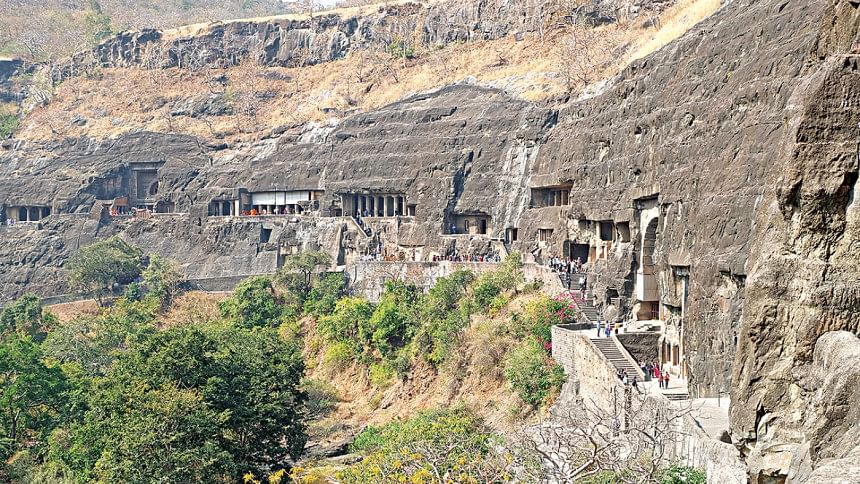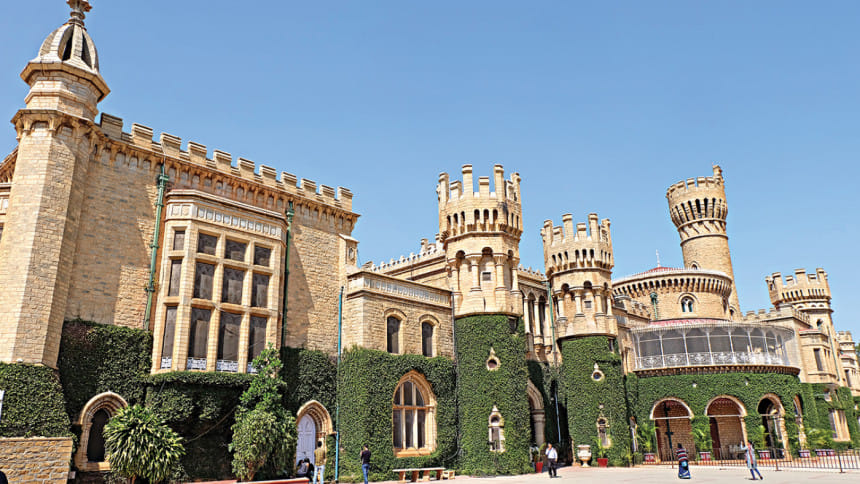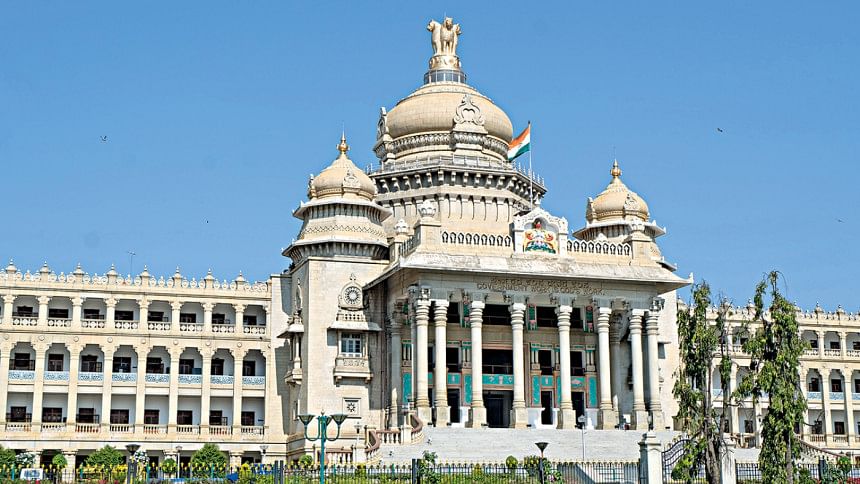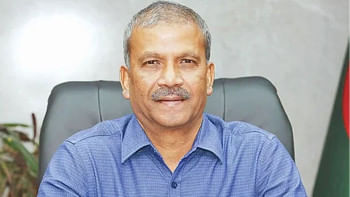The City of Gardens, and Ajanta

Bangalore, now called Bengaluru, is the capital city of Karnataka in South India. The weather is relatively pleasant throughout the year, hence referred to as 'the air conditioned city'. And because of several well planned parks and gardens within and outside the city, Bengaluru deserves to be called "the city of gardens."
The city, with its broad avenues, pavements and inviting green spaces, is relatively clean compared to other Indian cities. About 15 percent of the population are Muslims and there are several mosques, and the call of the Adhan can be heard distinctively.
Bengaluru is sometimes referred to as the "Silicon Valley of India" because of its role in the nation's leading information technology export.
On the top of our list to be visited was the Bangalore Palace. Built in 1887 by Chamaraja Wodeyar, this evocative palace has Tudor-style architecture, fortified towers, arches, green lawns with sculptures and elegant woodcarvings in its interiors. It was a delight to browse through all kinds of memorabilia, furniture, cutleries, family photos, and paintings on display.

Our next destination was the magnificent Vidana Soudha, a landmark of Bangalore, next to Cubbon Park. This enormous building is a massive example of neo-Dravidian architecture, with four domes on its four corners. It houses the Legislative Chamber of Karnataka Government, as well as many government departments.
Unfortunately, it's not open to the public, but is stunningly illuminated at night. Adjacent to it is the equally grand Vikasa Soudha that houses many state ministries.
Opposite to the Vidana Soudha is the Attara Kacheri. This eye-catching red two-storied building, built in 1867 under the reign of Tipu Sultan, has magnificent neoclassical architecture. It houses the High Court and many lower courts.
As we strolled through Cubbon Park, named after the erstwhile Commissioner of Bangalore, Sir Mark Cubbon, we were overwhelmed by the rich collection of ornamental and flowering trees, both exotic and indigenous. Occupying an enormous area, the park is the lung of the city and is a popular place for walkers, joggers, nature lovers and idle gossips, while the picturesque Ulsoor Lake runs through the heart of the city.
Located nearby is the red, Gothic-style State Central Library building, with imposing stone and fluted pillars. Adjacent to the library is Venkatappa Art Gallery, devoted to displaying famous paintings, plaster of Paris works and wooden sculptures of renowned artist Venkatappa.
The following morning, we dashed to Tipu Sultan's Palace and Fort, originally built by Chikkadeva Raya in mud. Later, Hyder Ali started reconstruction in Indo-Islamic architecture. This was completed by his son, Tipu Sultan, in 1791. The simple wooden summer palace, built amidst a planned manicured garden, is worth a visit. Also nearby is the elegant Hindu temple.
We found time to visit the Lalbagh Botanical Garden, built as a private Mughal-style garden for the city's royal rulers. It was established by Hyder Ali and later extended by his son Tipu Sultan. It derives its name from the red roses that bloom throughout the year there. The garden is said to have the most diverse species of plants in the world.
After a memorable stay at Bengaluru, we flew to Aurangabad via Hyderabad. We were lodged in the city centre amidst all the noise and blaring of Hindi and South Indian songs that continued till the wee hours. The city roads, with garbage littering the wayside, were full of potholes and encroached by vendors of all types. Traffic was simply horrendous. Everyone engaged in a mad rush. The city has a sizeable Muslim population.
One of the things that make Aurangabad stand out from the several other medieval cities in India are its 52 'gates' of the Mughal era, each of which have a local history, and the city deserves to be called the "City of Gates."
We did not fail to notice a dozen plus such gates that exist till now. Of all the gates, the Delhi Gate and the Bhadkal Gate have some special significance, built by Malik Ambar, in commemoration of his victory against the Mughals.

The city was founded in 1610 by Malik Ambar, Prime Minister of Murtaza Nizam Shah of Ahmadnagar, on the site of a village called Khadki. He was succeeded by his son Fateh Khan, who changed the name of Khadki to Fatehnagar.
With the capture of Daulatabad in 1633, the Nizam Shahi dominions, including Fatehnagar, came under the possession of the Mughals. In 1653, when Prince Aurangzeb was appointed as the viceroy of the Deccan for the second time, he made Fatehnagar his capital and called it Aurangabad.
The Tomb of Mughal Emperor Aurangzeb is an unmarked grave on the way to Ellora Caves. Unfortunately, we could not find the time to visit it.
In the evening, we visited Bibi Ka Maqbara, the burial place of Aurangzeb's wife, Rabia-ud-Durrani, built by her son Prince Azam Shah. It is an imitation of the Taj, at Agra, and due to its similar design, it is popularly known as the Mini Taj of the Deccan.
The Maqbara stands in the middle of a spacious and formally planned Mughal garden, with ponds, fountains, broad pathways and pavilions. However, we were not impressed by the maintenance of the Maqbara. Considering its historic importance, the place deserves better attention.
One of must-visit places while we were in Aurangabad was to visit the famous Ajanta Caves.
The road to Ajanta is horrendous. Full of potholes and diversions and dust, it took three and a half hours to reach the caves by road. Normally, it should not take more than two hours. However, once we reached our destination, we forgot about all our suffering and were simply mesmerised by the breath-taking beauty of the Ajanta caves.
The Ajanta Caves are 31 rock-cut cave monuments which date from 2nd century BC. We visited a few caves with paintings and sculptures considered to be masterpieces of both Buddhist religious art, as well as frescos.
In one of the caves, we found Buddhists engaged in prayer before a Buddha sculpture. Many of the caves are empty and devoid of any paintings or sculptures. One would have to walk at least four kilometres to look around.
We took the support of the coolies who shouldered us in wooden chairs. The view there is simply mind-blowing. After the visit, it left me wondering how it was possible several centuries ago to cut the mountainside into caves and then engage in carving sculptures and paintings.
On the way back, we stopped at a display and sales centre to watch Himroo, an age-old weaving art of Aurangabad. Himroo is woven using silk-cotton, silk-wool to make shawls. Needless to say no wedding is complete in Maharashtra without the colourful Paithani sari.
The visit has been highly rewarding, particularly the visit to Bangalore Palace, Bibi Ka Maqbara, Tipu Sultan's Summer Palace, and the Ajanta caves, and before I draw the curtain, it will be a crime if I do not mention the delicious Masala Dosa, and Dum Biryani.

 For all latest news, follow The Daily Star's Google News channel.
For all latest news, follow The Daily Star's Google News channel. 



Comments